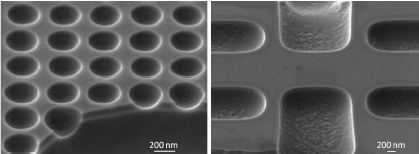CeNS Colloquium
Kleiner Physikhörsaal, LMU
Date: 17.11.2017, Time: 15:30h
Transport in Topological Insulator Nanostructures
Prof. Dieter Weiss, University of Regensburg
The discovery of 2D and 3D topological insulators (Tl) has opened an exciting new area of condensed matter physics. lt has been theoretically predicted [1] and recently shown experimentally that strained HgTe films constitute a 3D Tl [2-4], i.e., that two-dimensional surface states, having high electron mobility, enclose the insulating bulk of HgTe. The advantage of exploring 3D HgTe is its very high electron mobility which allows probing of mesoscopic effects. Here we present data obtained from single wires and antidot arrays. In wires, which are a promising platform to search for Majorana fermions [5], we observe the predicted switching of the phase of the Aharonov-Bohm type oscillations with Fermi energy for a magnetic field aligned along the axis of a wire [6]; confirming their topological nature requires, however, a more quantitative analysis. Antidot arrays, on the other hand, can be considered as a network of 1 D wires. Here we show first experiments trying to explore superlattice effects in a 3D topological insulator [7].
Work done in close collaboration with J. Ziegler, H. Maier, D. A. Kozlov, R. Fischer, S. Weishäupl, Z. D. Kvon, N. N. Mikhailov, S. A. Dvoretsky, J. Dufouleur, R. Kozlovsky, C. Gorini, M. H Liu and Klaus Richter.
[1] L. Fu and C. L. Kane, Phys. Rev. B76, 045302 (2007)
[2] C. Brüne et al., Phys. Rev. Lett. 106, 126803 (2011)
[3] D. A. Kozlov et al., Phys. Rev. Lett. 112, 196801 (2014)
[4] D. A. Kozlov et al., Phys. Rev. Lett. 116, 166802 (2016)
[5] J Manousakis et al., Phys. Rev. B 95, 165424 (2017)
[6] J H Bardarson, P. W. Brouwer, J. E. Moore, Phys. Rev. Lett. 105, 156803 (2010)
[7] H. Maier et al., Nature Comm., in press (2017)


